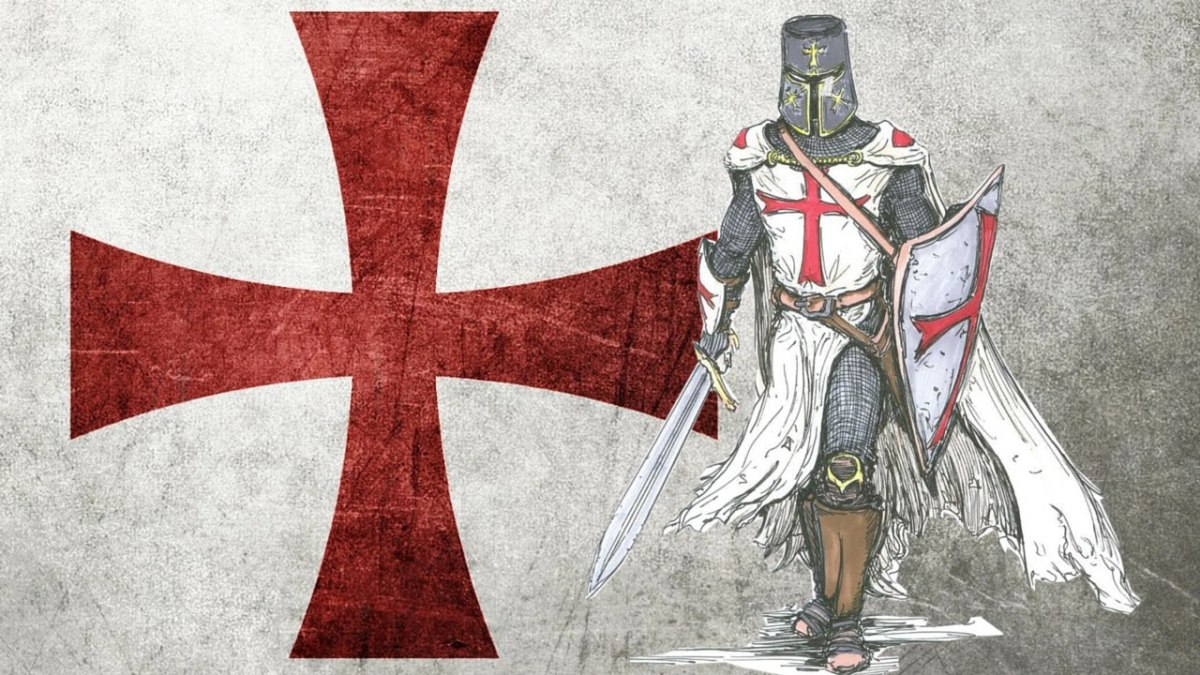Israel, the land of the Bible
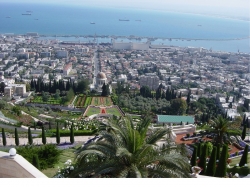
The Land of Israel
The Land of Israel refers to the land bordering the eastern shores of the Mediterranean which has been the Jewish people's God-given homeland since Biblical times. We learn from the Bible that over 3,500 years ago, the land was promised by God to the descendants of Abraham through his son Isaac and to the Israelites, descendants of Jacob, Abraham's grandson. This land forms part of the Biblical covenant between God and the Jewish people. The most precise geographical borders of the Promised Land are given in Exodus 23:31, which describe the borders as the Red Sea, the Mediterranean, and the Euphrates River.
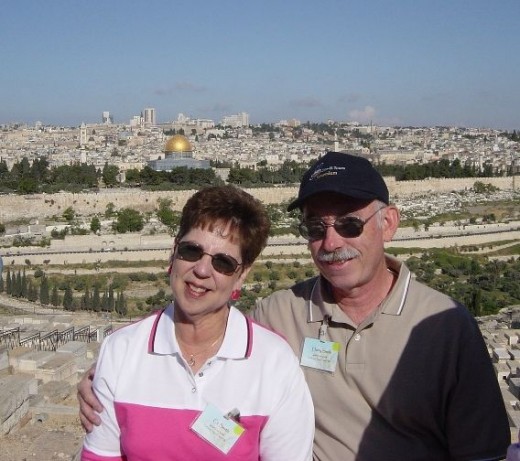
The Holy Land
In 1948, Israel became a nation
References to the land of Israel are also made in the New Testament, in Matthew 2:19-21. The actual political boundaries of the land have fluctuated from time to time and the land has been referred to by other names over time. At its maximum extent, during the height of David's united Kingdom of Israel, it corresponded approximately to present-day Israel, the Palestinian territories, the western part of Jordan and the southern part of Lebanon; at other times it embraced only the area around Jerusalem.
Israel is an amazing city, where the Jewish people have incredible continuity: It is the only nation on earth that inhabits the same land, has the same name, speaks the same language, and worships the same God that it did 3,000 years ago. If you dig in the soil, you will find pottery from time of David, coins from the Roman Empire, and 2,000-year-old scrolls written in a script remarkably like the one that today advertises the Israeli Big Mac.
The people of Israel (the "Jewish People") trace their origin to Abraham, who knew that there was only one God, the creator of the universe. Abraham, his son Isaac, and grandson Jacob (Israel), are the patriarchs of the Israelites. All three patriarchs lived in the Land of Canaan, that later came to be known as the Land of Israel (Genesis Chapter 23).
The name Israel derives from the name given to Jacob (Genesis 32:29). His 12 sons were the fathers of 12 tribes that later developed into the Jewish nation. The names Israel, Israeli or Jewish refer to people of the same origin.
The descendants of Abraham became a nation at about 1300 BC after their Exodus from Egypt under the leadership of Moses (Moshe in Hebrew). Soon after the Exodus, Moses communicated to the people of this nation (God’s chosen people), the Torah, and the Ten Commandments (Exodus Chapter 20). After wondering for 40 years in the desert, God’s people entered the Promise Land; the land of Israel, promised by God to the descendants of, Abraham, Isaac and Jacob (Genesis 17:8).
The people of modern day Israel share the same language and culture shaped by the Jewish heritage and religion passed through generations starting with father Abraham. Thus, Jews have had continuous presence in the land of Israel for the past 3,300 years.
The rule of Israelites in the land of Israel starts with the conquests of Joshua (1250 BC). The period from 1000-587 BC is known as the "Period of the Kings". The most noteworthy kings were King David (1010-970 BC), who made Jerusalem the Capital of Israel, and his son Solomon (970-931 BC), who built the first Temple in Jerusalem as described in the Old Testament.
In 587 BC, Babylonian Nebuchadnezzar's army captured Jerusalem, destroyed the Temple, and exiled the Jews to Babylon (modern day Iraq).
The year 587 BC marks a turning point in the history of the region. From this year onwards, the region was ruled or controlled by a succession of superpower empires of the time in the following order: Babylonian, Persian, Greek Hellenistic, Roman and Byzantine Empires, Islamic and Christian crusaders, Ottoman Empire, and the British Empire.
In 1948, Israel became a nation, on the very day that was prophesied in the Bible by the prophet, Ezekiel: Read Ezekiel 36-40.
This photo covers the entire area of the old city
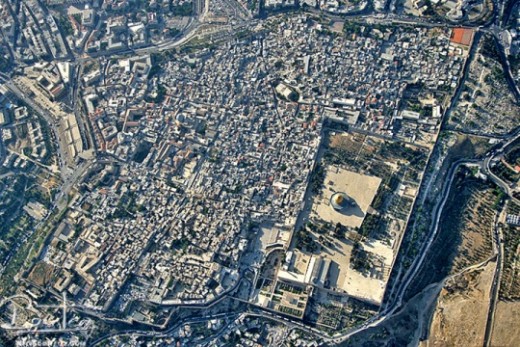
Tel Aviv, from our hotel window
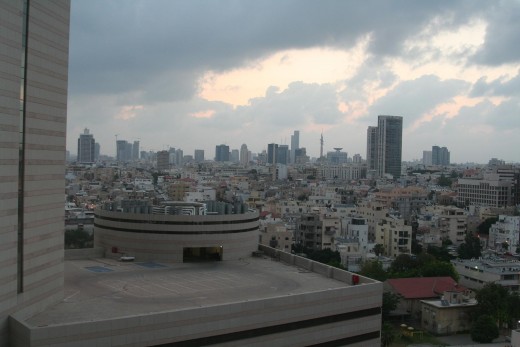
Caesarea by the Sea -- Theatre
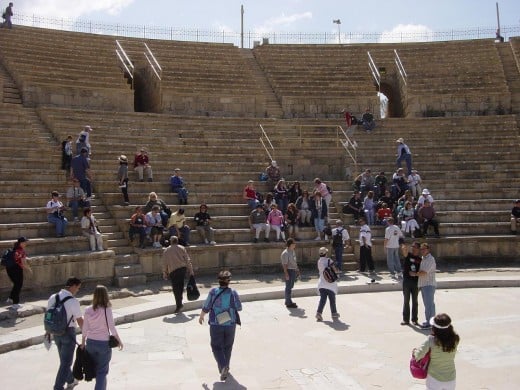
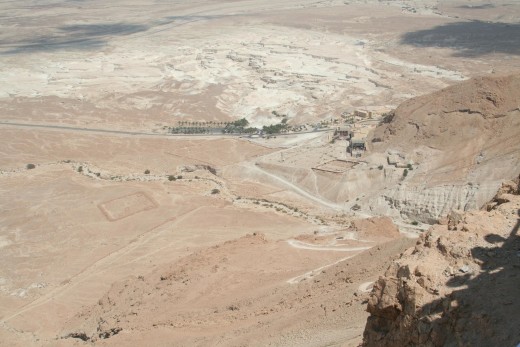
MASADA
The Mountain Palace
MASADA
The Mountain Palace
Masada is a wonderful place to visit. Its main attractions are the ruins of what once were three grand palaces built by King Herod. The mountaintop itself provides some of the most breathtaking scenic views of the Dead Sea and the surrounding area. To see ruins of this age and the intricacies of the palaces was truly a wondrous thing. Throughout time this mountain top retreat was conquered and lost by many a civilization. It bears witness to one of the most significant stories of bravery and courage for the Jewish people, a story of death before surrender and slavery. Today it provides a magnificent testimony to heritage, history and beauty.
We had a great view of the oasis and one of the many Roman camps; the small brown square to the left is the camp. These camps were erected during the siege of Masada. Access to the mountaintop is either by hiking (45 minutes) or by cable car; our group decided to use the cable car.
The Masada Model
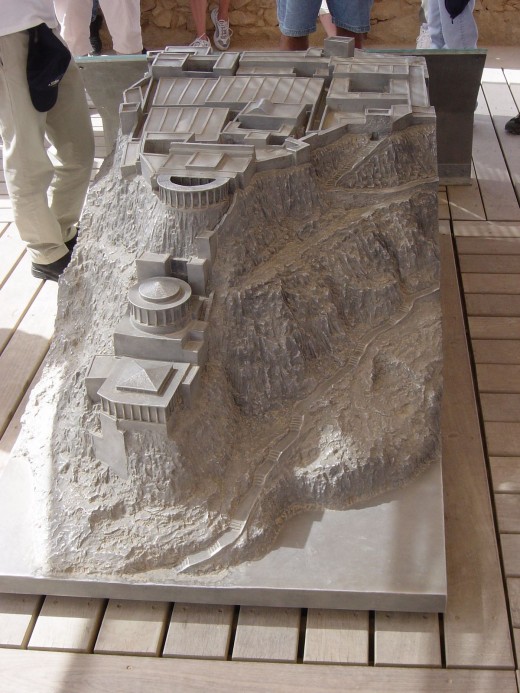
Masada: Don't look down

Masada: The Cable car
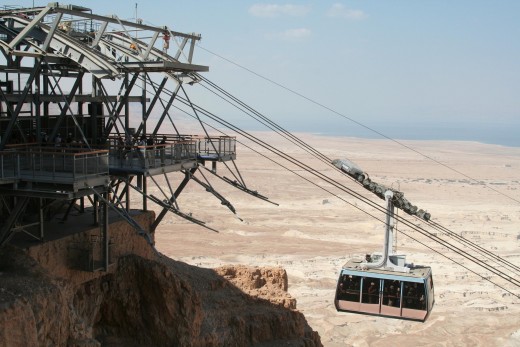
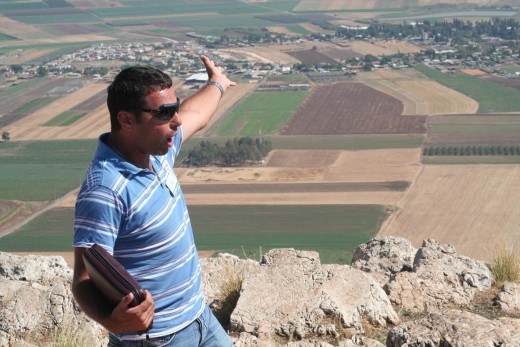
Mount Precipice
Biblical References: Luke 4:16-30
Mount Precipice is located south of Nazareth, on the cliffs of Mt Kedumim, overlooking the Yizrael valley and Mount Tabor. The site is reached by car following the signs of “Mt Precipice” on the highway that bypasses Nazareth.
A visit to the top of the cliff is well worth the drive, because of the fantastic view of the Jezrell valley below. The sights of Afula and Mount Tabor are spectacular
Biblical References:
Luke 4:16-30
This story tells about how angry Jewish worshippers drove Jesus away from the Synagogue, attempted to throw him of the cliffs, and he disappeared before their eyes "in the midst of them.”
And He came to Nazareth, where He had been brought up; and as was His custom, He entered the synagogue on the Sabbath day, and stood up to read. And the book of the prophet Isaiah was handed to Him. And He opened the book and found the place where it was written, “The Spirit of the Lord is upon me because He anointed me to preach the gospel to the poor. He has proclaimed release to the captives, and recovery of sight to the blind, to set free those that are oppressed, to proclaim the favorable year of the Lord.” And he closed the book, gave it back to attendant and sat down; and the eyes of all in the synagogue were fixed on him. And he began to say to them, “Today this scripture had been fulfilled in your hearing.”
And all were speaking well of Him, and wondering at the gracious words that were falling from His lips; and they were saying, “Is not this Joseph's son?” And he said to them, “No doubt you will quote this proverb to me, ‘Physician, heal yourself! Whatever we heard was done at Capernaum, do it here in your home town as well.’” And He said, “Truly I say to you, No prophet is welcome in His hometown. But I say to you in truth, there were many widows in Israel in the days of Elijah, when the sky was shut up three years and six months, when a great famine came over all the land; and yet Elijah was sent to none of them, but only to Zarephath, in the land of Sidon, to a woman who was a widow. And there were many lepers in Israel in the time of Elisha the prophet; and none of them was cleansed, but only Naaman the Syrian.” And all the people in the synagogue were filled with rage as they heard these things; and they got up and drove Him out of the city, and led him to the brow of the hill on which their city had been built, in order to throw Him down the cliff. But passing through their midst, He went His way.
Now is your chance to see some videos of Israel - The second day of our VISIT to the Holy Land, we visited The Sea of Galilee and Capernaum
Capernaum was a fishing village inhabited from mid 2nd century BC to 11th century AD. It is located on the northwestern shore of the Sea of Galilee and had a population of about 1,500.
Recent excavations revealed that there were two synagogues in the village: the more recent was made of limestone and was built on top of the older, which was made of local black basalt. Only the foundation walls and some of the cobblestone floor are what remain of the earlier structure.
A church near Capernaum is said to be the home of Saint Peter. When Jesus left Nazareth he settled in Capernaum where he chose his first four disciples; James, John, Peter and Andrew.
The town is cited in the Gospel of Luke where it was the home of the apostles Peter, Andrew, James and John, as well as the tax collector Matthew. In Matthew 4:13 the town was described as the home of Jesus. According to Luke 4:31-44, Jesus taught in the synagogue in Capernaum on the Sabbath. Jesus then healed a man who had the spirit of an unclean devil and healed a fever in Simon Peter's mother-in-law. According to the Gospel of Luke, it is also the place where a Roman Centurion asked Jesus to heal his servant. A building which is a synagogue of that period has been found beneath the remains of a later synagogue.
Mt. Precipice
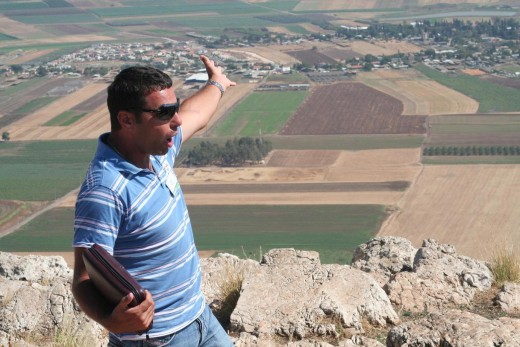
Another View from Mt. Precipice
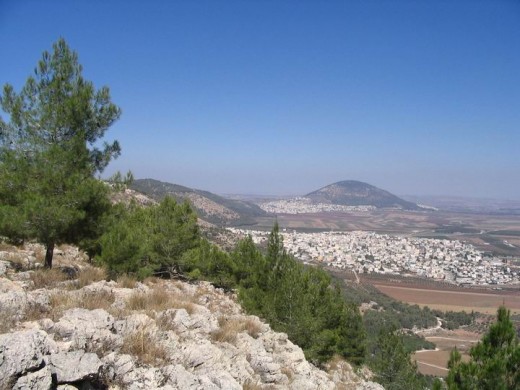
Ruins of one of the bathing areas within the compound.
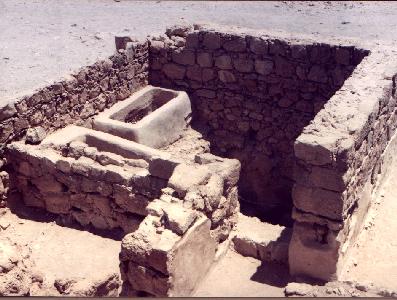
A better view of what it was like in the bathing areas. Notice the finished walls and elaborate tile work on the floor.
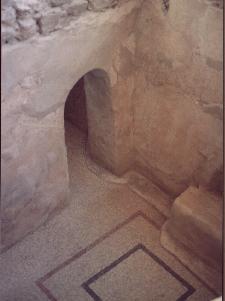
Sea of Gallilee-Preaching on the shore
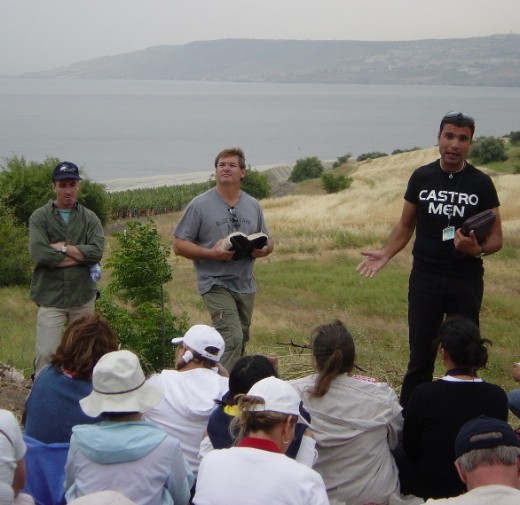
Joppa
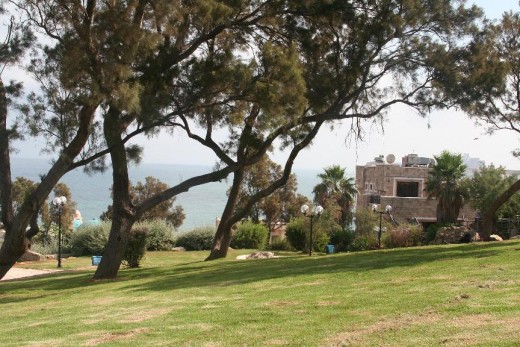
Sea of Galilee, Israel and American flags

Church of the Beatitudes
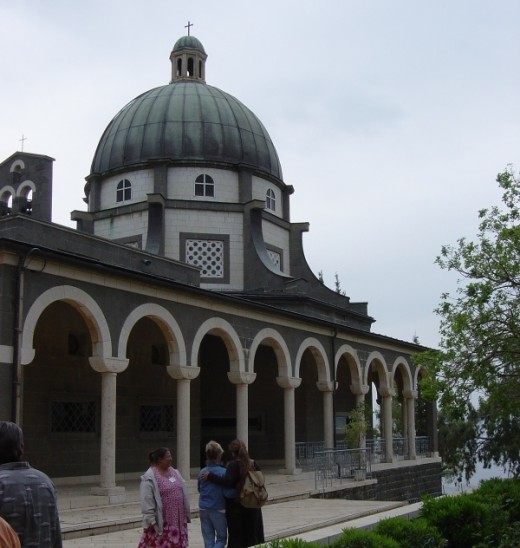
Joppa Cathedral
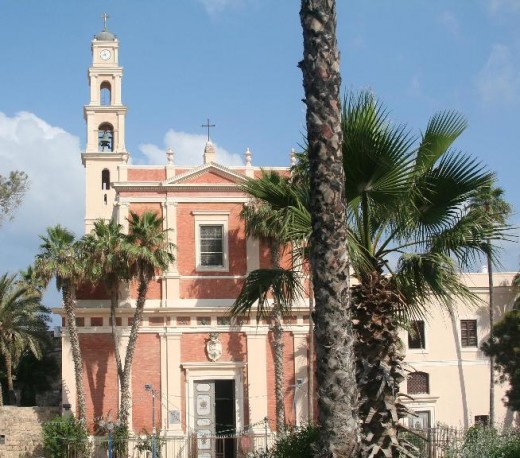
Caesarea Aquaduct
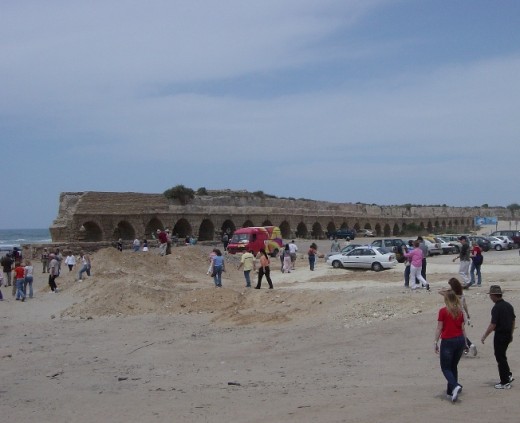

Christian Grape Harvesters Fulfilling Prophecy In Israel
Volunteer harvesters from the United States and Canada
Christian Grape Harvesters Fulfilling Prophecy In Israel
http://www.cbn.com/
Volunteer harvesters from the United States and Canada, have local Jewish vintners in Samaria, otherwise known as the West Bank, wondering if not just the grapes, but also the times - are ripening.
The Hebrew prophet Isaiah predicted that close to the time of the Messiah's coming, the sons of foreigners would be their vinedressers.
"Our sages have taught us that during the times of the final redemption, which we are right now in, other nations will come to help build the land of Israel, to help the Jewish nation, to fulfill all of the prophesies," said Yonatan Behar, the spokesman for the Yeshiva Har Bracha.
Tommy Waller, a Christian from the U.S., has harvested in Samaria's vineyards for the past six years. What started out as a one-time family project has grown into Ha Yovel Ministries with more than 150 North American volunteers.
"The word of God is true and that people need to connect to it and people need to come to the land to experience the harvest," Waller said.
"We just wanted to come out here and fulfill prophecy of picking grapes. We've read the Bible, Jeremaiah and Isaiah," one harvester said.
This year, they are harvesting about 100 acres of vineyards -- the equivalent of a staggering 400,000 bottles of wine.
Israelis are saying, 'If you don't come, we're in trouble. If you don't come, these vines don't get harvested.'
Why? It's difficult to attract Israeli labour, and regular sabotage of the fields makes Jewish vintners cautious of Arab workers.
The harvesters come bringing musicians to play worship music while the grapes are gathered. At a time that Israeli Jews believe could be the final redemption before the Messiah comes, it appears that the fields are ripe and that Christians are the ones given the task to harvest.
"In the Bible, it is written that when Meshiach will come, people from all the world will come and help Israel, and we believe in it," Vered ben Sa'adon, Tura Winery and Vineyard, said.
Grape Harvesting
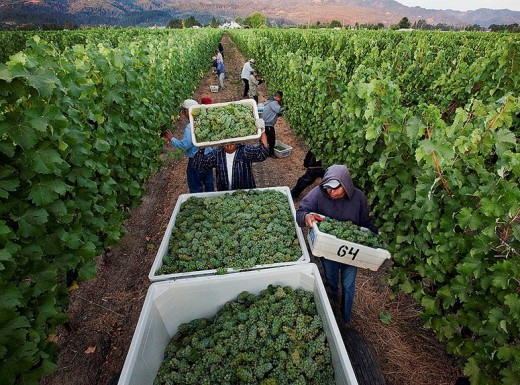
Harvesting Grapes

Jerusalem, the capital of Israel - The most Holy city in the World
Jerusalem, the capital of Israel and the most Holiest city in the World, is located in the center of Israel, on top of the Judean mountains (700-800M above sea level). This strategic location, first selected by King David 3000 years ago, made the city the heart of the biblical Israel and the Jewish faith, a Holy city for the Christian and Muslim faiths, and the capital of Modern Israel.



